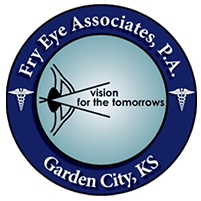Chalazion & Other Lesions
Eyelid lesions, such as chalazion, can be an uncomfortable and aesthetically displeasing condition. Some eyelid lesions may also be cancerous and require a skilled physician to distinguish these from benign lesions. Fortunately, effective and safe treatment for these conditions can be provided by the ophthalmologists at Fry Eye Associates.
More Chalazion Resources
Chalazion & Other Lesions FAQ
In many cases, a chalazion will clear up on its own over a few weeks. You can try using warm compresses and eyelid massage to help unblock the oil glands. If the lump on your eyelid is uncomfortable or not improving then additional treatment may be needed.
Professional treatment may include anti-inflammatory medication in the form of eye drops, ointments, local injection or oral medication. In some instances a minor surgery is the best way to remove the chalazion, especially those that recur or don’t respond to more conservative treatment.
Schedule Your Visit
Our doctors are here to help address your concerns about your eyes and are experts in finding solutions that work best for you.


